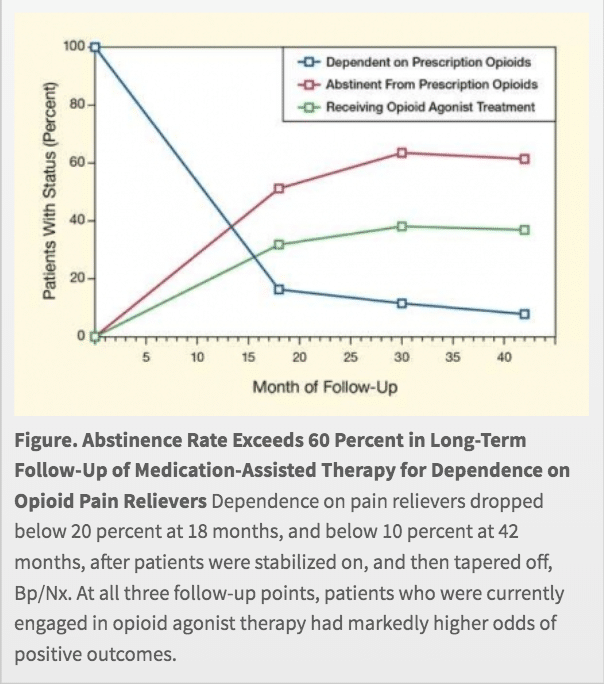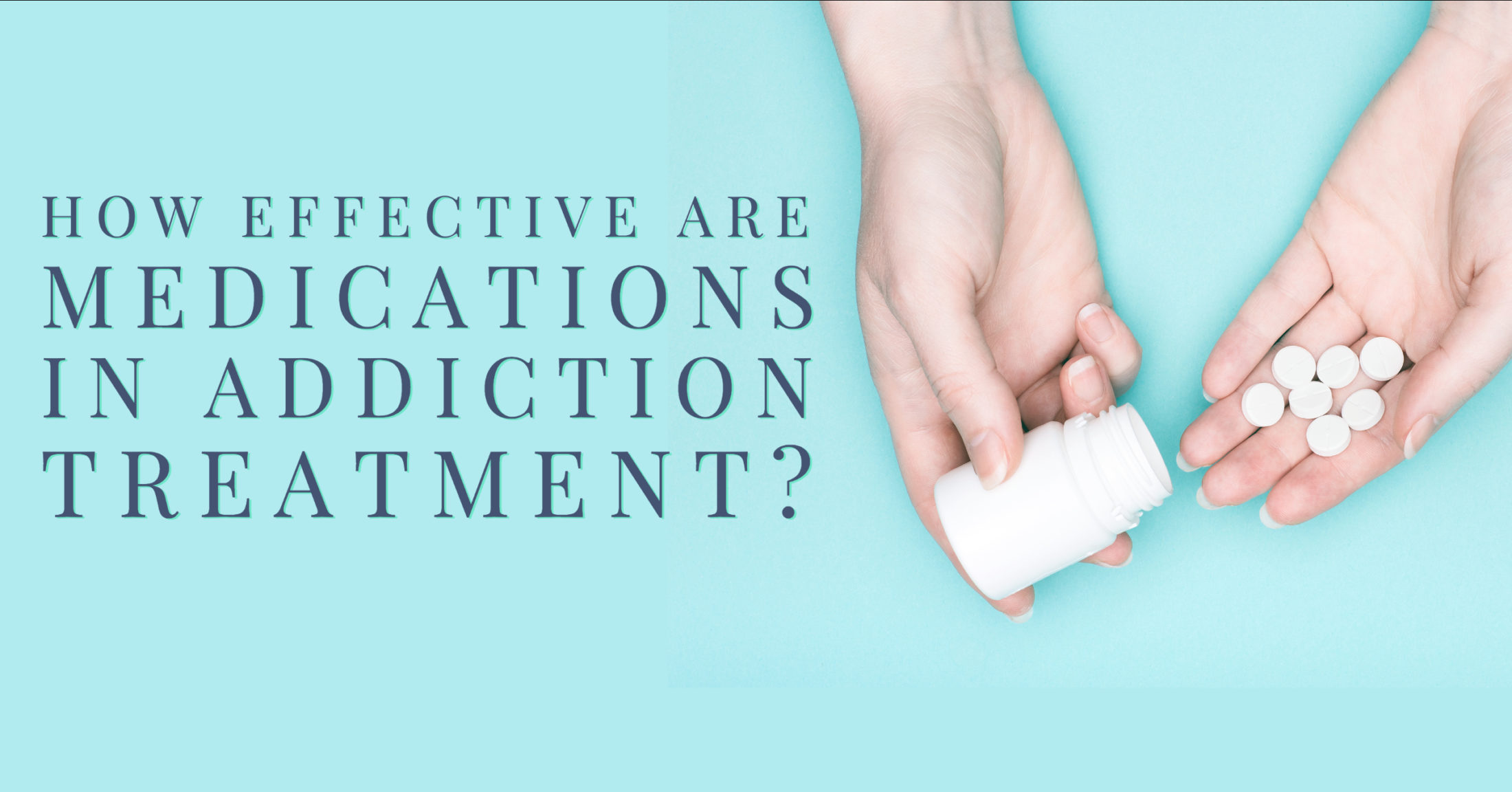What is Medication-Assisted Treatment and How Does it Work?
There is a lot of speculation in recent years on the effectiveness of medication-assisted treatment – also referred to as medication-assisted therapy. Secretary of Health and Human Services Tom Price created some commotion with his comments about medication-assisted treatment. He said, “if we’re just substituting one opioid for another, we’re not moving the dial much” in the nation’s opioid epidemic.
This seems to be a common belief with many people – even many substance abuse treatment centers. Medication-assisted treatment is a recent addition to substance abuse treatment programs in recent years. Still many, if not most, facilities still do not provide it.
Why is this the case? A large part has to do with the Alcoholics Anonymous philosophy. They say that the only way to achieve true recovery is to obtain pure abstinence. It can be hard to argue that pure abstinence is better than taking medication once a day. On the other hand, one could also argue that it is very hard to achieve this state of pure abstinence.
Looking at the national average of success statistics, relapse rates can be as high as 90%. Generally, the relapse rates are anywhere from 40 to 60 percent. These are numbers for individuals who complete their entire treatment program (typically around 90 days). However, many people do not make it through their treatment program. Statistics show the longer a person stays in treatment, the better their chances for long term success. Therefore, relapse rates for people who do not make it through treatment are much higher.
Purpose of MAT
Medications help people ease into sobriety by reducing the uncomfortable initial withdrawals as well as helping them reduce their cravings. Without these daily stressors, people can focus on their therapy – giving them a better chance to complete treatment. This is the primary goal of MAT.
In the end, it comes down to whether or not MAT is worth it. What are the proven benefits of MAT and do they outweigh their setbacks? We will go into both of these further in this article.
Opioids Effect on the Brain
Comprehending what heroin and/or opioids do in the brain and also in the body is crucial to understanding why medication-assisted therapy works.
Opiates work by traveling across the blood-brain barrier as well as connecting to receptors on brain cells. This triggers a waterfall of neurotransmitters as well as brain activity and produces the high that individuals feel. That brain activity can add to physiological reliance– and, just if combined with hereditary and also psychological aspects that customize the method a drug is regarded, addiction.

MAT for Addiction
Addiction doesn’t always have to be seeking drugs to obtain a euphoric high. While there are many cases like this, more often than not – especially with prescription opioid use – people are using opioids and alcohol to mitigate the withdrawal effects and feel normal. If there was a drug they could substitute with that would help them mitigate these withdrawals without the potential for overdosing (or the myriad of health destructions done by mainstream opioids and alcohol) why not use them?
2 Ways in Which MAT Functions
Doctors can give people opioids triggering the exact same receptors yet are absorbed into the blood over a longer period of time– warding off withdrawal signs and symptoms as well as breaking an emotional association between taking a drug and feeling high.
Psychiatrists can likewise give somebody an opioid antagonist– a non-opioid drug that remains on those very same receptors and blocks them– so that if a person relapses, he or she won’t feel anything. (If a person goes off the medication and also relapses, nevertheless, that can have fatal repercussions. A person’s resistance for the medicine reduces after extended periods of sobriety– particularly after antagonist treatment.).
For a full list of the different types of medications, substance abuse disorders treated with these medications, and mental health disorders treated with these medications; visit our Medication-Assisted Treatment (MAT) overview page.
The ultimate goal of MAT is full recovery, including the ability to live a self-directed life. This treatment approach shows:
- Increase retention in treatment
- Improve patient survival
- Increase patients’ ability to gain and maintain employment
- Improve birth outcomes among women who have substance use disorders and are pregnant
- Decrease illicit opiate use and other criminal activity among people with substance use disorders
- As a subsidiary bonus, because medication helps keep people in treatment longer, it also lowers a person’s risk of contracting HIV or hepatitis C by reducing the potential for relapse.
Effectiveness of MAT for Addiction Treatment
Medication-Assisted Therapy (whether used for alcohol addiction or opioid addiction) is considered an evidence-based therapy. This means that unlike other conventional treatment methods like the 12-steps, evidence-based therapies have been researched and backed by science to be clinically effective. Said another way, when MAT is used correctly, it gives people a better chance for long term success in substance abuse treatment.
For a comprehensive study specifically on MAT’s effect on opioid use disorder, the CDC’s National Center for Injury Prevention and Control is conducting a study of MAT that will examine how health and other patient outcomes vary across the three types of medications used in MAT and for patients receiving counseling only treatment. The psychiatrist will examine the patient, site, and provider characteristics to determine how they may impact health and other outcomes. Because MAT is a relatively new treatment modality, this will be one of the first comprehensive studies done on this treatment.
Studies on MAT Effectiveness
Despite the fact that MAT has relatively low research, there is promising evidence to show its effectiveness.
“Studies have shown that outcomes are much better when you are on medication-assisted therapy. For one, it decreases risk of relapse — significantly. Second, MAT has also been shown to be effective in preventing infectious diseases like HIV. Third, medication-assisted therapy has been shown to be effective in preventing overdoses,”
According to Dr. Nora Volkow, the director of the National Institute on Drug Abuse,

Various studies, including systematic reviews of the research, have found that medication-assisted therapy can cut the all-cause mortality rate among substance abuse patients by half or more! Imagine a new drug comes out that could save the lives of half the people with the disease? Yes, addiction is a disease, but because the disease is already tainted with drug use from the start, we fail to see the benefits.

MAT for Mental Health
Without treating underlying causes of addiction like mental illnesses, relapses are almost inevitable. Therefore, to understand the effectiveness of medications in addiction treatment, you must also understand why it is important to effectively treat mental illnesses as well.
Psychotherapy like cognitive behavioral therapy (CBT) are common approaches for therapist to treat mental illnesses like depression and anxiety. But, much like the use of medications in addiction treatment, medications can also be an effective enhancement in mental health treatment.
Medications Used
Medications used to treat mental health disorders vary and range depending on the disorder. For instance, for depression doctors prescribe antidepressants. For ADHD, doctors will use stimulants and for anxiety, most likely anti-anxiety medications like Benzodiazepines. There are a group of medications that can work for a variety of mental health disorders. For instance, psychiatrists might prescribe antipsychotic medications to treat a variety of disorders like OCD and eating disorders. Finally, for disorders like depression and Schizoaffective Disordermood, they might prescribe mood stabilizers.
It is important to note that the doctor prescribing medications for mental health should also be the same doctor prescribing medications for substance abuse. This way, the psychiatrist can assess any potential interactions and more importantly the potential for abuse. For instance, anti-anxiety medications like benzodiazepines often have a high potential for abuse; therefore there are alternative anti-anxiety medications like SSRIs (Selective serotonin reuptake inhibitors) as well as antihistamines like Vistaril.
For a full list of the different types of medications, substance abuse disorders treated with these medications, and mental health disorders treated with these medications; visit our Medication-Assisted Treatment (MAT) overview page.
Effectiveness of MAT for Mental Health Treatment
Much like MAT studies for addiction, it can be hard to point to a single study to show its effectiveness as each medication and disorder varies. However, there is a consensus that the use of medications alongside psychotherapies does increase the success rates of mental health disorders vs. psychotherapies alone. For more information on these studies visit the National Institute of Mental Health (NIMH).

Unfavorable Effects of MAT
Replacing on Drug with Another
Aren’t you just replacing one drug with another? Well, yes we are, but the drug we are putting in its place is one that is not abusive and therefore almost impossible to cause an overdose. We are also replacing it with a drug that allows people to go back to work and have money in their pocket and allow them to a normal life again. The word “drug” when speaking about addiction always has a negative connotation, but you have to remember people take drugs (or as its normally called – medications) to alleviate countless illnesses.
Chance for Abuse
According to SAMHSA, research has shown that when provided at the proper dose, medications used in MAT have no adverse effects on a person’s intelligence, mental capability, physical functioning, or employability.
The Creation of Methadone
On the other hand, when dealing with medications, there is almost always the chance for abuse. The start of MAT began with methadone. This helped people safely and slowly come off of opioids like heroin; but methadone has potential for abuse. Unlike modern medications used today, people could get “high” from this drug if used incorrectly (by pocketing doses and taking them all at once).
The Creation of Buprenorphine
After methadone, there was the creation of buprenorphine. Unlike methadone, buprenorphine had a longer half-life. This means patients only needed to take a dose less often – often every 3 days compared to every day like methadone. Buprenorphine also did not produce the same intensive high you would get with methadone – limiting the potential for abuse and overdose. Unfortunately, individuals could still abuse buprenorphine if injected intravenously.
And Now Suboxone – Today’s Standard
This eventually led to the creation of Suboxone. Suboxone is a combination of buprenorphine and naloxone (brand name Narcan). Naloxone is an opioid antagonist (which blocks opioid receptors) and only works when used intravenously. Therefore, when a person attempts to abuse suboxone by injecting it into their bloodstream, the naloxone will mitigate the suboxone’s effects.
For this reason, suboxone is one of the most widely used medications in the treatment of opioid use disorders. Because of the opioid epidemic in America, this drug could not have come at a better time.
If a person cannot abuse suboxone, what other setbacks are there? Well, a person prescribed suboxone will need to continue to take suboxone to effectively stay in recovery. Therefore, if a person forgets to take their medication, it can make them vulnerable to relapse. This dependence on medication is often the biggest scrutiny when dealing with MAT.
Dependence on Medication
To solve this problem, we at Coalition Recovery often help people come off of their medications before ceasing treatment. This often involves a slow titration of medications. We believe that after 3 months without using and consistent psychotherapies, individuals are in a safe place to continue their recovery on their own without medications. After the first 90 days of treatment, incredible transformations can be seen. These transformations make abstinence possible, but only after these initial 90 days. This is why we use medications as a tool to help them get to where they want to be, instead of a lifelong crutch.

What About Talk Therapy and Psychotherapy?
While medications are more effective than doing nothing, the effectiveness of medications, when used alongside talk therapy, increases exponentially. This is also true for the other way around; psychotherapies are more effective when used with medications.
Wrap-Up
In my opinion – based on my anecdotal experience working in a dual-diagnosis substance abuse treatment center which utilizes medication assisted treatment – MAT is a no-brainer when used correctly. “Used correctly” is the key word!
The psychiatrist is the clinical professional in the treatment center who is going to be responsible for prescribing these medications. Therefore, if your psychiatrist is not extremely knowledgeable in knowing when and how to prescribe these medications, it can cause adverse effects. For instance, if a psychiatrist is not specifically experienced in addiction medication, they may believe that suboxone is an end-all-cure-all, but this is not the case. If a doctor prescribes suboxone to the wrong individual, it can cause negative health effects and even abuse.
How To Know If Your Psychiatrist is Right For You
First and foremost, make certain your psychiatrist is board-certified. This ensures he or she meets the nationally recognized standards for education, knowledge, experience and skills to provide high-quality care in a specific medical specialty.
Second, try to make sure your psychiatrist is board-certified in addiction medicine. This ensures you know you are receiving the best diagnosis and treatment for your particular situation. Your psychiatrist may not elect to prescribe medications for whatever reason. Psychiatrists board-certified in addiction psychiatry are a rare bread. Finding one in your area might be a bit tricky. If you live in a rural area, you may have a hard time finding one. Some urban areas have a thin selection. So, for this reason, at the very minimum, make certain the psychiatrist is board-certified in general psychiatry.
***As a side note, Dr. Barnett – our medical director and psychologist at Coalition Recovery – is board certified in general psychiatry, addiction psychiatry, geriatric psychiatry and forensic psychiatry.***
Here at Coalition Recovery, we believe in the power of Medication-Assisted-Therapy for substance abuse and mental health. We believe in giving every individual their best chance for long-term success. For this reason, we utilize the latest advancements in evidence-based therapies like MAT and CBT. Studies show the effectiveness of these therapies so we use them to our advantage. Drug rehabilitation programs are all unique in their own ways. Be sure to do your research when deciding on which facility is right for you.







